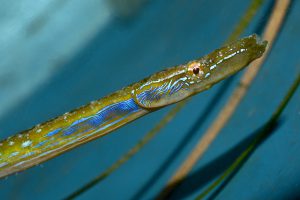We are happy to announce the beginning of the partnership between the Octopus Foundation and Patrick Louisy’s association, Peau-Bleue. The two teams combined their strengths the past week-end for the scientific project called SYNTESE, partly financed by the Octopus Foundation. This new cooperation thrills Patrick Louisy: “We are very happy to work with the Octopus Foundation. Their financial support is backed by a strong human investment. It is obvious that our work really interests the whole team. They didn’t hesitate to get their hands in the water. It’s very gratifying.”
 The French scientist is almost the only one to study the species of seahorses and more generally the family of syngnathidae. “These animals are fascinating”, he explains. “Our interest in them started in 2005. At that time, we knew that the populations of seahorses were struggling all around the globe. Yet, their ecology and vulnerability in French waters were largely undocumented.”
The French scientist is almost the only one to study the species of seahorses and more generally the family of syngnathidae. “These animals are fascinating”, he explains. “Our interest in them started in 2005. At that time, we knew that the populations of seahorses were struggling all around the globe. Yet, their ecology and vulnerability in French waters were largely undocumented.”
During the first ten years, the Peau-Bleue association gathered data in order to better understand these animals and their fragility. Now, through their research program, the aim is to document the role they play in their delicate ecosystem. The French team believes that “to better protect, we must first understand”.
The SYNTESE program (short in French for “Syngnathidae, witness for the health of their environment”), which is backed up by the Octopus Foundation, will focus on a precise and important question: are these animals an indicator of the health of their environment? They live in specific areas, mainly seagrasses found in various lagoons of the Mediterranean as well as in the Arcachon Bay next to the Atlantic.
To achieve this goal, the project needs to investigate two factors: the size and health of the fish populations, and the state of the seagrasses. Firstly, the syngnathidae, usually found with the help of a pushnet called a haveneau, are brought back on land to be identified, measured and counted before being released back into the lagoon’s water. Secondly, the structure of the seagrass (various species, homogeneity, substrate) is assessed along with its vitality (height, density, presence of rival seaweeds).
The Octopus Foundation’s role in this program is mainly a technical one. Julien Pfyffer and his team will assist the French scientist by, for example, fixing cameras on the pushnet to see if the animals manage to swim out of it. This will validate the method of sampling. Furthermore, these images will be added to an educational video destined to be projected at the Concarneau Marinarium, the Brittain wing of the Natural History Museum of Paris. The landmark of the French capital is also a partner of the project led by Peau-Bleue. Finally, Julien Pfyffer wishes to map and model the various habitats of these unique fish.
